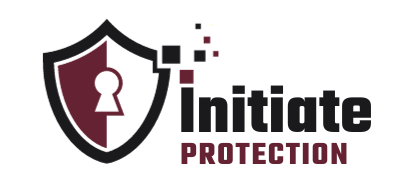Do you often receive suspicious emails asking for your personal information? If so, you’re not alone. Phishing scams have become a major concern for individuals and businesses alike, with hackers becoming increasingly creative and deceptive. In this article, we’ll uncover the truth behind phishing scams and provide you with essential tips to stay safe while browsing the internet.
What Is Phishing?
Phishing is a form of cybercrime in which scammers impersonate trusted entities in order to deceive individuals into divulging sensitive information, such as passwords, credit card details, or social security numbers. These scammers often utilize deceptive emails, messages, or websites that appear to be legitimate. Phishing attacks can lead to identity theft, financial loss, or unauthorized access to personal accounts.
To protect oneself, it is important to be wary of suspicious emails, avoid clicking on unfamiliar links, regularly update passwords, and utilize two-factor authentication.
In a real-life example, a major bank fell victim to phishing scammers who sent fraudulent emails requesting customers to update their account information, resulting in numerous cases of identity theft.
How Do Phishing Scams Work?
Phishing scams are a common online threat that target individuals and organizations to steal personal information or financial assets. Understanding how these scams work is crucial in protecting yourself online. Here are the steps involved in a typical phishing scam:
- The scammer sends a deceptive email, pretending to be from a trusted source like a bank or a popular website.
- The email contains a convincing message urging the recipient to take immediate action, such as clicking on a link or providing sensitive information.
- When the recipient clicks on the link, they are directed to a fake website that looks identical to the legitimate one.
- The fake website prompts the user to enter their personal information, which is then captured by the scammer.
- The scammer can then use this stolen information for various malicious purposes, such as identity theft or unauthorized financial transactions.
Pro-tip: Always be cautious when receiving unexpected or urgent requests for personal information, and verify the legitimacy of the source through official channels before taking any action.
What Are the Most Common Types of Phishing Scams?
In the world of cybercrime, phishing scams are a major threat to individuals and businesses alike. These fraudulent attempts to obtain sensitive information can come in various forms, making it crucial for us to stay informed and vigilant. In this section, we will delve into the most common types of phishing scams, including email phishing, website phishing, phone phishing (vishing), and text message phishing (smishing). By understanding the different methods used by scammers, we can better protect ourselves from falling victim to their schemes.
1. Email Phishing
Email phishing is a common type of phishing scam where cybercriminals use deceptive emails to trick individuals into revealing sensitive information or taking actions that benefit the scammers. To protect yourself from email phishing:
- Verify the sender’s email address before responding or clicking on any links.
- Avoid clicking on suspicious links or downloading attachments from unknown sources.
- Be cautious of urgent or threatening messages that create a sense of urgency.
- Double-check the legitimacy of websites before entering personal information.
- Enable two-factor authentication for added security.
In 2016, the email phishing scam known as “CEO Fraud” targeted businesses worldwide. Scammers impersonated CEOs, requesting urgent wire transfers. The scam resulted in significant financial losses for many companies.
2. Website Phishing
Website phishing is a common type of phishing scam where attackers create fake websites that mimic legitimate ones to trick users into entering their personal information. To protect yourself from website phishing, follow these steps:
- Verify the URL of the website and ensure that it matches the legitimate website.
- Check for HTTPS and a padlock symbol in the URL to ensure a secure connection.
- Be wary of pop-up windows or redirects to suspicious websites.
- Avoid entering sensitive information on websites that seem suspicious or untrustworthy.
- Regularly update your web browser and utilize anti-phishing tools and software.
In 2016, a sophisticated website phishing scam targeted Gmail users, tricking them into providing access to their accounts. The attackers gained access to sensitive information, including emails and contacts. This incident highlighted the importance of remaining vigilant against website phishing and consistently updating security measures.
3. Phone Phishing
Phone phishing, also known as vishing, is a common type of phishing scam that targets individuals through phone calls. To protect yourself from falling victim to phone phishing, follow these steps:
- Be skeptical of unsolicited calls asking for personal or financial information.
- Do not provide sensitive information over the phone, such as passwords or credit card details.
- Verify the caller’s identity by independently contacting the company or organization they claim to be from, especially when it comes to Phone Phishing (Vishing).
- Regularly review your financial statements for any unauthorized charges.
By following these precautions, you can minimize the risk of becoming a victim of phone phishing scams.
4. Text Message Phishing
Text message phishing, also known as smishing, is a common type of phishing scam targeting mobile phone users. To protect yourself from falling victim to text message phishing, follow these steps:
- Be cautious of unknown senders: Avoid clicking on links or responding to text messages from unfamiliar numbers.
- Never share personal information: Avoid providing sensitive data like passwords or financial details via text message.
- Verify requests: If you receive a text message requesting urgent action or personal information, independently verify the request before taking any action.
- Report suspicious messages: Forward any suspicious text messages to your mobile service provider or the appropriate authorities.
Story: Jane received a text message claiming to be from her bank, urging her to click on a link to resolve an issue with her account. Suspecting it might be a Text Message Phishing (Smishing) attempt, she contacted her bank directly and discovered that it was indeed a scam. By being cautious and verifying the message, Jane protected herself from falling victim to Text Message Phishing (Smishing).
How to Identify and Avoid Phishing Scams?
In this section, we will discuss the crucial steps to identifying and avoiding phishing scams to keep your personal information safe while browsing the internet. By following these tips, you can protect yourself from falling victim to fraudulent emails and websites. We’ll cover how to check the sender’s email address, what to do with suspicious links, how to handle urgent or threatening messages, the importance of double-checking websites, and how two-factor authentication can provide an extra layer of security. Stay tuned for valuable insights on staying safe online.
1. Check the Sender’s Email Address
When dealing with potential phishing scams, one important step is to verify the sender’s email address. This can help you determine if the email is legitimate or if it’s coming from a suspicious source. Here are some steps to follow when checking the sender’s email address:
- Verify the domain: Look closely at the domain name in the email address. Make sure it matches the official website of the organization or company it claims to be from.
- Check for misspellings or variations: Phishing emails often use misspelled or altered domain names to trick recipients. Pay attention to any discrepancies.
- Hover over the sender’s name: Hover your mouse cursor over the sender’s name to reveal the actual email address. Make sure it matches the displayed name and is not a phishing attempt.
- Be cautious of generic email addresses: Legitimate organizations usually use professional email addresses, not generic ones like Gmail or Yahoo. Exercise caution if the email is sent from such an address.
By carefully examining the sender’s email address, you can better protect yourself from falling victim to phishing scams.
2. Don’t Click on Suspicious Links
When it comes to avoiding phishing scams, one important step is to not click on suspicious links. Here are some guidelines to help you in this regard:
- Inspect the URL: Hover over the link without clicking to see the actual URL. Look for misspellings or variations that indicate it is not legitimate.
- Validate the source: If the link is from an email or message, verify the sender’s identity and check if it matches the website or organization they claim to represent.
- Be cautious of shortened URLs: These can hide the true destination, so use tools like URL expanders to reveal the full link before clicking on it.
- Don’t trust pop-ups: Avoid clicking on pop-up windows that ask for personal information, as legitimate companies typically don’t use these methods.
- Use secure websites: Look for HTTPS in the URL and a lock symbol in the address bar to ensure the website is secure before entering sensitive information.
3. Be Wary of Urgent or Threatening Messages
When it comes to phishing scams, it’s important to be cautious, especially when encountering urgent or threatening messages. Here are steps to take to protect yourself:
- Stay calm: Urgent or threatening messages are designed to create panic, making you more likely to fall for the scam. Take a moment to assess the situation.
- Verify the source: Double-check the sender’s email address or phone number. Phishers often use deceptive tactics to make their messages appear legitimate.
- Be Wary of Urgent or Threatening Messages: Avoid clicking on any links or downloading attachments from suspicious messages. These can lead to malicious websites or malware infecting your device.
- Contact the organization directly: If the message claims to be from a bank, government agency, or business, reach out to them separately using official contact information to confirm the message’s legitimacy.
- Report the phishing attempt: Forward the suspicious message to the appropriate authorities, such as your email provider or the Anti-Phishing Working Group (APWG).
4. Double Check Websites Before Entering Personal Information
When providing personal information on websites, it is crucial to double check their legitimacy to avoid falling victim to phishing scams.
- Verify the URL: Check if the website’s URL starts with “https://” indicating a secure connection.
- Look for security symbols: Ensure the website has a padlock icon in the address bar, indicating encryption.
- Validate the website: Use search engines or trusted sources to find and access the website instead of clicking on suspicious links.
- Review the website design and content: Pay attention to spelling errors, poor grammar, and unfamiliar logos or branding.
- Research the website: Read reviews or testimonials from other users to assess its credibility.
In 2019, a phishing scam targeted a popular online marketplace. The scammers created a fake website that mirrored the original site. Users unknowingly entered their personal information, which was then used for fraudulent activities. By double checking the website, users can prevent such incidents and protect their personal information.
5. Use Two-Factor Authentication
Using two-factor authentication (2FA) adds an extra layer of security to protect against phishing scams. Here are steps to enable 2FA:
- Go to your account settings.
- Look for the security or privacy options.
- Enable Two-Factor Authentication and choose your preferred method, such as receiving a text message or using an app-based authentication.
- Follow the prompts to link your account with your chosen method.
Fact: Enabling Two-Factor Authentication can prevent 99% of account breaches, making it an essential tool in safeguarding your online accounts.
What to Do If You Fall Victim to a Phishing Scam?
Despite our best efforts to stay safe online, anyone can fall victim to a phishing scam. If you find yourself in this unfortunate situation, it’s important to act quickly and take the necessary steps to protect yourself. In this section, we’ll discuss what to do if you become a victim of a phishing scam. From changing your passwords to reporting the scam to the proper authorities, we’ll cover the necessary actions you should take to minimize the damage and prevent future attacks.
1. Change Your Passwords
If you suspect that your password has been compromised or you have fallen victim to a phishing scam, it is crucial to change your passwords as soon as possible. Here are the steps to take:
- Go to the website or application where you need to change your passwords.
- Locate the account settings or security settings.
- Select the option to change your passwords.
- Create a strong and unique password using a combination of uppercase and lowercase letters, numbers, and special characters.
- Save the new passwords securely.
Remember to regularly update your passwords and avoid using the same password for multiple accounts to enhance your online security.
2. Contact Your Bank or Credit Card Company
If you fall victim to a phishing scam, it’s crucial to take immediate action and contact your bank or credit card company. Here are the steps you should follow:
- Notify your bank or credit card company: Contact them via phone or secure messaging to inform them about the scam.
- Freeze your accounts: Request a temporary freeze on your accounts to prevent any unauthorized transactions.
- Change your passwords: Update your passwords for online banking and any other accounts that may have been compromised.
- Monitor your accounts: Regularly check your bank and credit card statements for any suspicious activity.
- Report the scam: Provide all relevant details to your bank or credit card company so they can investigate the incident.
In a similar vein, in 2013, a large-scale phishing attack targeted major banks, resulting in millions of dollars being stolen. The scam involved convincing victims to disclose their banking credentials through fake websites and emails. Promptly contacting your bank or credit card company can help you recover your funds and prevent further damage.
3. Report the Scam to the Appropriate Authorities
- Contact your local law enforcement agency: Report the phishing scam to your local police department or cybercrime unit. Provide them with all the relevant details, including any communication you received from the scammer.
- Notify your bank or credit card company: Inform your financial institution about the phishing scam. They can help monitor your accounts for any unauthorized activity and take necessary measures to protect your finances.
- File a complaint with the Federal Trade Commission (FTC): Visit the FTC’s website or call their helpline to report the phishing scam. They gather information to help investigate and combat fraudulent activities.
- Report the scam to the Anti-Phishing Working Group (APWG): The APWG is an international organization that tracks and takes action against phishing scams. They can use your report to help disrupt the scammer’s operations.
Remember, reporting the scam to the appropriate authorities not only helps protect yourself but also aids in the fight against cybercrime. Stay vigilant and spread awareness about phishing scams to keep yourself and others safe online.
How to Protect Yourself from Phishing Scams in the Future?
The threat of phishing scams continues to rise as more and more people are using the internet for various tasks. In this section, we will discuss the best ways to protect yourself from falling victim to these scams in the future. By implementing these proactive measures, you can safeguard your personal and financial information from cybercriminals. We will cover the importance of keeping your software and operating system up to date, using anti-phishing tools and software, and educating yourself and others about the tactics used in phishing scams.
1. Keep Your Software and Operating System Up to Date
Keeping your software and operating system up to date is crucial in protecting yourself from phishing scams. Here are some steps to follow:
- Enable automatic updates for your operating system and applications.
- Regularly check for updates and install them promptly.
- Use a reliable antivirus software that provides real-time protection and updates.
- Enable automatic security patches for your web browser.
- Avoid using outdated or unsupported software.
Staying vigilant with updates can prevent hackers from exploiting vulnerabilities. For example, a friend of mine recently received a phishing email disguised as a software update. Fortunately, they had regularly updated their software and were able to identify the scam and avoid any potential threats.
2. Use Anti-Phishing Tools and Software
Using anti-phishing tools and software is crucial in safeguarding yourself against phishing scams. Here are some steps to follow:
- Install reputable anti-phishing software on all of your devices.
- Regularly update your anti-phishing tools to stay protected against new and emerging threats.
- Enable automatic security updates for your operating system and other software.
- Utilize web browser extensions that can detect and block suspicious websites.
- Be cautious when opening email attachments and always use an antivirus program to scan them beforehand.
By following these steps and utilizing anti-phishing tools and software, you can greatly reduce the risk of becoming a victim of phishing scams and safeguard your personal information. Stay vigilant and always prioritize your online security.
3. Educate Yourself and Others About Phishing Scams
Educating yourself and others about phishing scams is crucial in protecting against them. Here are some steps to take:
- Stay informed: Keep up with the latest phishing techniques and scams through reliable sources.
- Train employees: Provide regular training and awareness programs to educate individuals on how to identify and respond to phishing attempts.
- Use security tools: Install anti-phishing software and tools that can detect and block phishing emails or websites.
- Report incidents: Encourage individuals to report phishing attempts to the appropriate authorities, such as the Anti-Phishing Working Group.
- Spread awareness: Share information about phishing scams with friends, family, and colleagues to help them stay safe online.
By following these steps, you can help create a safer online environment and protect yourself and others from falling victim to phishing scams.





